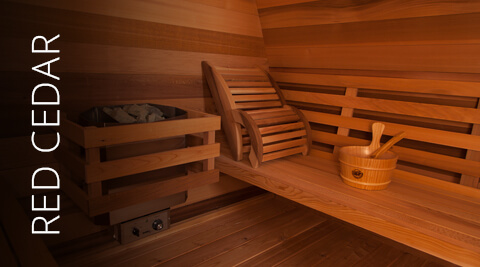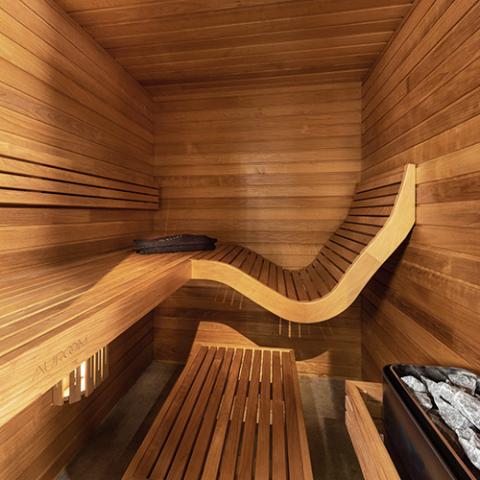The Definitive Guide for Traditional Sauna
Wiki Article
Not known Incorrect Statements About Traditional Sauna
Table of ContentsIndicators on Traditional Sauna You Should KnowThe smart Trick of Traditional Sauna That Nobody is DiscussingOur Traditional Sauna DiariesTraditional Sauna Can Be Fun For Anyone
The majority of the weight lost in a sauna is water loss and is re-gained upon rehydrating. Without an uncertainty sauna can be an essential part of a healthy and balanced weight loss program. To take a look at the distinctions between typical and IR saunas, I will divide these right into verifiable, theoretical, and produced differences.Thus, the hottest factor in the saunawhich goes to the ceiling straight above the sauna heateris usually in between 185 and 190 F. Traditional Sauna. Claims that a traditional sauna goes beyond 200 F is simply not true and not suitable for electrical saunas marketed in the US. The temperature for a far-infrared sauna is generally established between 120 and 140 F; nonetheless, unlike the traditional sauna, the goal in and IR room is not to accomplish a high temperature level
As a result of this, the temperature distinction is nearly pointless, since excessive sweating leads to both sauna types, but the approach of heating up the body is various. In an IR sauna the bather will certainly really feel hot and will sweat profusely, however at much lower temperature levels. Hence, if the goal is to invest longer durations of time in the sauna, the IR sauna is an excellent selection.

The Buzz on Traditional Sauna
When the heat is attained, the aspects cycle on and off to maintain the heat. The majority of standard sauna users delight in putting water over the rocks to create steam to increase sauna moisture levels. The advantages of pouring water over the rocks include: making the room a lot more comfy, moistening the nasal passages, and enabling the use of aromatherapy by blending essential oils with the water.In a far-infrared sauna, the warm front penetrate the body to properly heat up the body and raise the body core temperature level. To attain this boosted temperature level, Far-infrared emitters create infrared energy which is close to the very same wavelength as that which the body naturally emitsoften described as the "Vital Array" of 7 to 14 microns), so the energy is well received by the body.
When the energy gets in the body, it creates the body temperature to boost and ultimately results in sweat. In an infrared sauna it is very important for the emitters/heaters to stay on nearly frequently. Because there is no mass of rocks to keep warmth, the sauna will certainly cool down if the emitters shut down.
As stated over, the sauna bather in an infrared area wishes to position himself in front of operating emitters to obtain optimal gain from the heat. The home heating time for both areas can be extremely various, depending upon just how the spaces are made use of. For a typical sauna, a next bather should enable 30-40 mins for the room to achieve a desired temperature level and to correctly pre-heat the rocks.
Some Known Details About Traditional Sauna
A well created sauna will usually attain a temperature level of 150-160 F in concerning 30-40 mins. For hotter temperatures, the space might require to heat for a longer period.To some, 15 minutes was "thrown away" while the infrared energy heated the timber panels instead of heating up a body, while others find a pre-heated area to be much more comfortable and think a raised beginning temperature level is required to begin perspiring. The length of recommended usage for each area is around the very same (10-15 minutes per session); nevertheless, because of the lower air temperatures and the capacity to really feel the impacts of infrared heat much faster than a traditional sauna, it is not unusual for an individual to spend a total amount of 20-30 minutes in an infrared sauna.
Traditional saunas tend to be larger (thus make use of even more power) than infrared saunas, although conventional saunas are certainly readily Go Here available in one and two person sizes. For a two-person typical sauna, 5x6 or 5x7 dimension is most preferred. The top bench can pleasantly seat two or three people and is additionally long enough to exist down during the sauna session.


The average price per kWH of power in the united state is about $0.11, so a 4.5 kW heating unit will certainly set you back about $.50 to run for one hour, if the heater runs continuously for one hour. Usually a sauna heating unit will run for 75% of the very first hour and 50% of succeeding hours on since the elements cycle once the set temperature level is attained.
Not known Incorrect Statements About Traditional Sauna
A two individual far-infrared area is normally physically smaller sized than a typical sauna, commonly about 4' x 4' or smaller sized. The IR heater is normally 1.5-1.7 kW using a 120 volt 15 amp plug-in service. Since the area can be made use of sooner than a sauna area, we will certainly think the area is made use of for to of an hour including warm up time.Finally, there is a seldom discussed difference in the social experience in between the 2 spaces. While our society has lost some of the social benefit of the conventional sauna experience, it can be really socially gratifying. From family members time in the sauna, to heart-felt conversations with loved ones, to sauna partiesthe conventional sauna find this experience can result in intimate mingling.
The majority of higher end infrared spaces include tinted light treatment, sound systems and full-glass fronts.
Report this wiki page